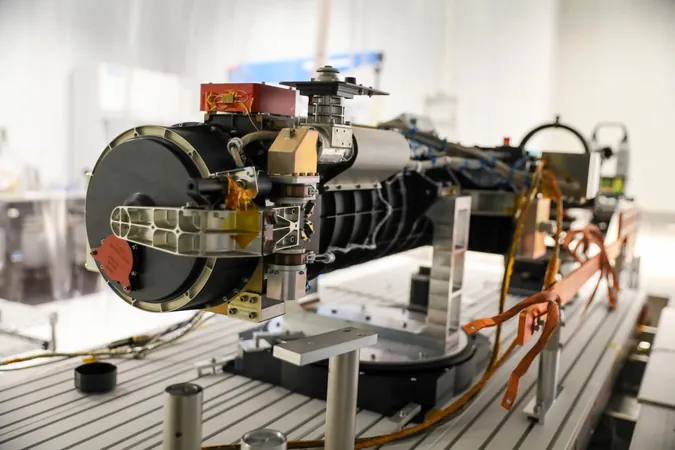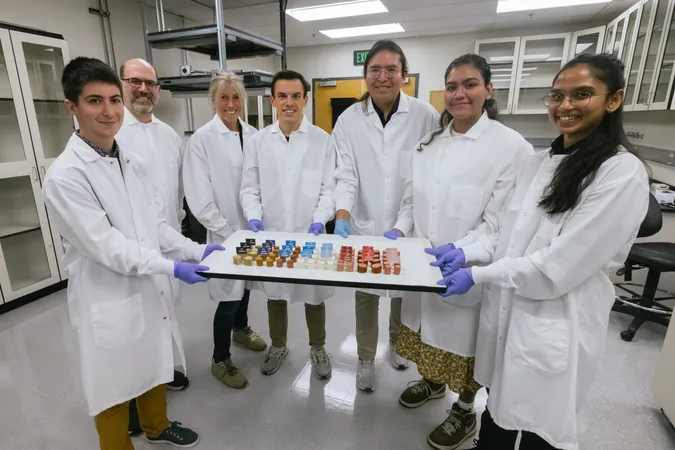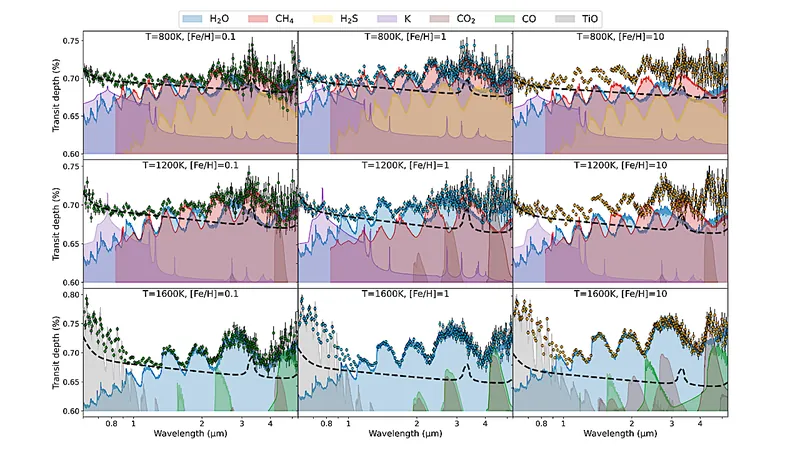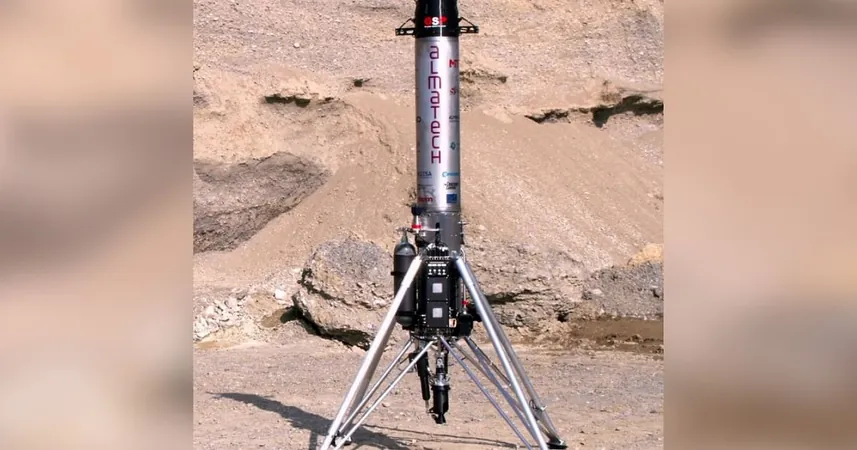
CODEX Coronagraph Launches to the ISS: Unlocking Solar Mysteries Like Never Before!
2024-11-08
Author: Jacob
A Groundbreaking Experiment
A groundbreaking experiment is set to revolutionize our understanding of the sun. This week, the Coronal Diagnostic Experiment (CODEX) was successfully launched aboard SpaceX's Cargo Dragon during the CRS-31 mission, marking a significant milestone for solar research. After docking at the International Space Station (ISS) on November 5th, CODEX is ready to embark on its mission to explore the enigmatic solar corona.
What Is the Solar Corona?
The solar corona, a shimmering layer of the sun's atmosphere, is often hidden from view due to the brilliance of the sun itself. It can only be glimpsed during a total solar eclipse. CODEX aims to change that by employing a coronagraph—a sophisticated instrument that creates an 'artificial eclipse'—to examine the middle region of the corona that remains poorly understood.
International Collaboration
This ambitious project is a collaborative effort involving NASA's Goddard Space Flight Center, Italy's National Institute for Astrophysics, and South Korea's KASI. Additional technical expertise has been provided by the U.S. Naval Research Laboratory, showcasing an international commitment to unraveling cosmic mysteries.
What Makes CODEX Special?
The CODEX coronagraph works by using an occulting disk to block out the sun's bright light, allowing scientists to study the fainter corona. Although similar instruments can function on Earth, placing CODEX in space eliminates atmospheric distortion and ensures clearer observations. Notably, the disk used in CODEX is roughly the size of an orange, allowing it to effectively shield the sun.
The Importance of the Corona
The importance of studying the corona cannot be overstated. Scientists believe this region could be the source of the solar wind—streams of charged particles that surge past Earth at breathtaking speeds exceeding a million kilometers per hour. Interestingly, while the sun's surface has a temperature around 6,000 degrees Celsius, the corona exceeds temperatures of one million degrees Celsius, an enigma that CODEX aims to shed light upon.
Understanding the Solar Wind: A Dual Mystery
The research conducted by CODEX will complement ongoing missions such as NASA's Parker Solar Probe and the European Space Agency's Solar Orbiter, as well as working alongside the SOHO mission's coronagraphs. By measuring plasma properties such as temperature, density, and speed in the corona, CODEX will provide unparalleled insight into solar wind phenomena.
Astrophysicist Niicholeen Viall explains, “While the Parker Solar Probe gathers precise data in situ at close proximity to the sun, CODEX will offer a broader perspective on plasma behaviors over time.” This dual approach is vital for improving predictive models of space weather, which can significantly impact satellite operations and telecommunications on Earth.
The Future of Solar Research and Coronagraphs
The journey of coronagraphs isn't new; the first was tested aboard Skylab in the 1970s. The future promises even more advanced instruments like ESA's Proba-3, launching soon to study the solar atmosphere with enhanced precision. The upcoming Polarimeter to UNify the Corona and Heliosphere (PUNCH) mission will deploy multiple satellite observatories to monitor solar structures as they evolve.
Moreover, the Nancy Grace Roman Space Telescope, scheduled to launch in 2027, will further the capabilities of coronagraph-like instruments to explore exoplanets, opening new frontiers in astronomy.
Conclusion
As CODEX prepares to delve into the mysteries of the solar wind, the excitement in the scientific community is palpable. Observations from this innovative experiment may finally decode the origins of solar phenomena with implications for both space exploration and life on Earth. Keep your eyes on the sky—it’s about to get even more thrilling!









 Brasil (PT)
Brasil (PT)
 Canada (EN)
Canada (EN)
 Chile (ES)
Chile (ES)
 España (ES)
España (ES)
 France (FR)
France (FR)
 Hong Kong (EN)
Hong Kong (EN)
 Italia (IT)
Italia (IT)
 日本 (JA)
日本 (JA)
 Magyarország (HU)
Magyarország (HU)
 Norge (NO)
Norge (NO)
 Polska (PL)
Polska (PL)
 Schweiz (DE)
Schweiz (DE)
 Singapore (EN)
Singapore (EN)
 Sverige (SV)
Sverige (SV)
 Suomi (FI)
Suomi (FI)
 Türkiye (TR)
Türkiye (TR)